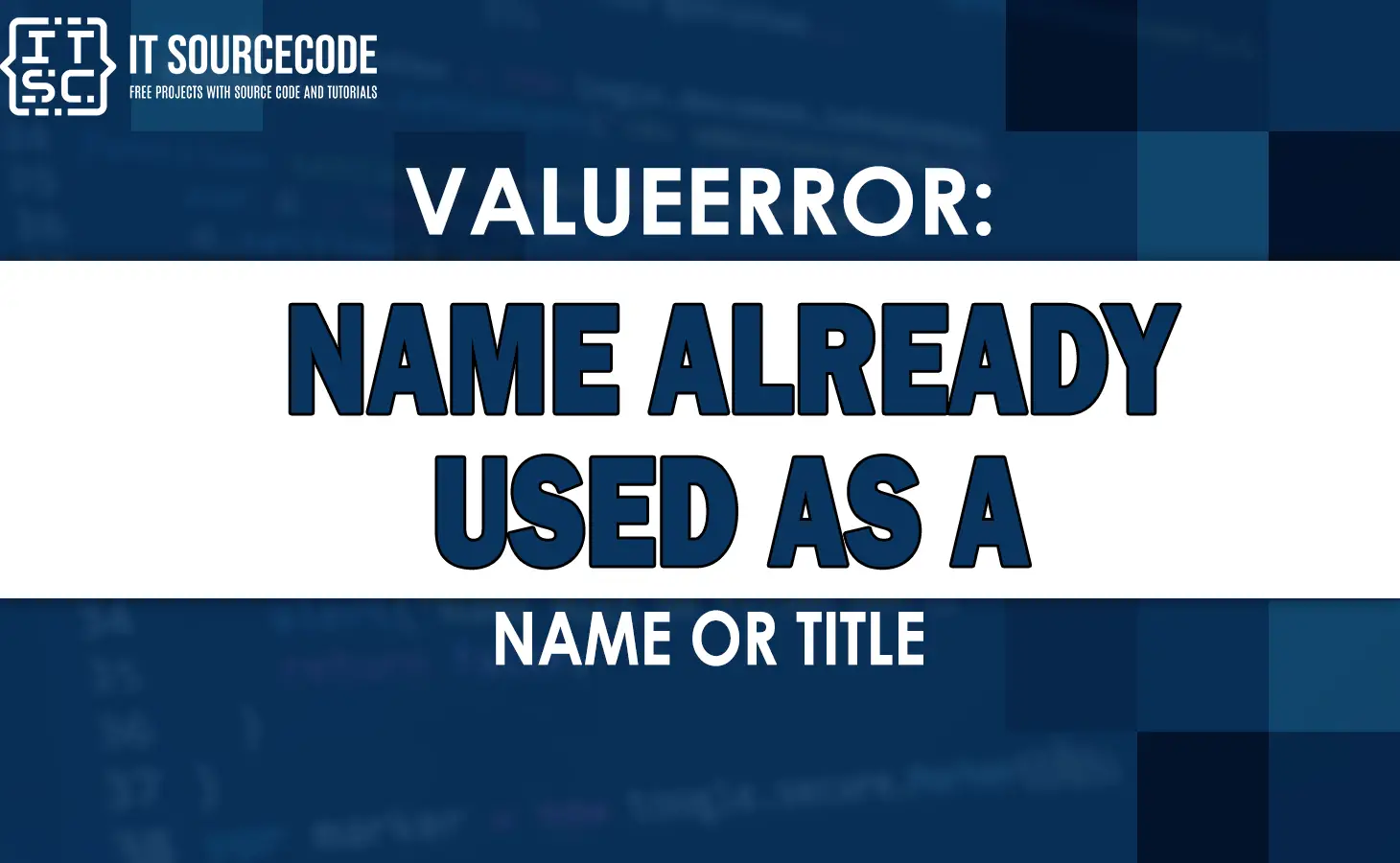One of the common error that programmers often experience is the ValueError: name already used as a name or title.
This error occurs when a variable or function name is repeated within the same scope, causing conflicts and unexpected action in the program.
In this article, we will discuss this error in detail, provide examples to clarify the issue, and present a practical solutions to resolve it.
Understanding the ValueError Name Already Used as a Name or Title
If you encounter the ValueError with the message name already used as a name or title error, it means that you have used a name that is already defined to another variable or function within the same scope.
This conflict can occur in different programming languages, including Python, JavaScript, and others. It is shown that there is a naming clash, making it impossible for the interpreter to determine between the two entities with the same name.
How the Error Reproduce?
This is an example code of how the error reproduce:
def example_message():
print("Hello, Itsourcecode!")
def example_message():
print("Welcome!")
def example_message():
raise ValueError("Name Already Used as a Name or Title")
example_message()Output:
Traceback (most recent call last):
File “C:\Users\Dell\PycharmProjects\Python-Code-Example\main.py”, line 13, in
example_message()
File “C:\Users\Dell\PycharmProjects\Python-Code-Example\main.py”, line 10, in example_message
raise ValueError(“Name Already Used as a Name or Title”)
ValueError: Name Already Used as a Name or Title
In the example code above, we have three consecutive definitions of the example_message() function.
The last definition raises a ValueError easily with the message “Name Already Used as a Name or Title“.
When you call the example_message() function, it will raise the ValueError instead of printing any message.
Solutions to Fix the Valueerror: name already used as a name or title
To resolve the ValueError: name already used as a name or title, we can apply the following solutions:
Solution 1: Rename the Conflicting Entity
The simplest solution to resolve the valueerror is to rename one of the conflicting entities.
By providing them a specific and different names, we can prevent the conflicts and remove the error.
In our previous example, we can rename one of the example_message() functions to something different, such as example_message2().
For example:
def example_message():
print("Hello, Itsourcecode!")
def example_message2():
print("Welcome!")
def example_message3():
print("to the Tutorial")
example_message()
example_message2()
example_message3()By creating this small adjustment, we can ensure that the names are different within the same scope, avoiding the ValueError from occurring.
Solution 2: Use Different Scopes
Another solution to fix the valueerror is to use different scopes for the conflicting entities.
Scopes define the visibility and accessibility of variables and functions within a program.
By removing the conflict entities into different scopes, we can avoid clashes and resolve the error.
Here’s an example:
example_message = "Hello, Itsourcecode!"
def message():
print(example_message)
def message2():
example_message = "Welcome, to the Tutorial!"
print(example_message)
message()
message2()In this example code, we declare the variable message outside the functions, making it accessible to both functions without any naming conflicts.
The ValueError is preventing by engaging different scopes effectively.
Frequently Asked Questions
The ValueError error usually occurs when we use a name that is already assigned to another variable or function within the same function.
Yes, you can have multiple functions with the same name as long as they are specified in different scopes.
Yes, there are static code analysis tools and IDEs (Integrated Development Environments) that can help detect naming conflicts and suggest solutions.
Fixing the ValueError name already used as a name or title error is important for maintaining the correctness and reliability of your code.
Conclusion
The ValueError: name already used as a name or title error can be frustrating for the programmers.
However, with the solutions provided in this article, you can effectively resolve it.
Through renaming conflicting entities, utilizing different scopes, or employing classes and objects, you can eliminate the error and ensure the smooth execution of your code.

